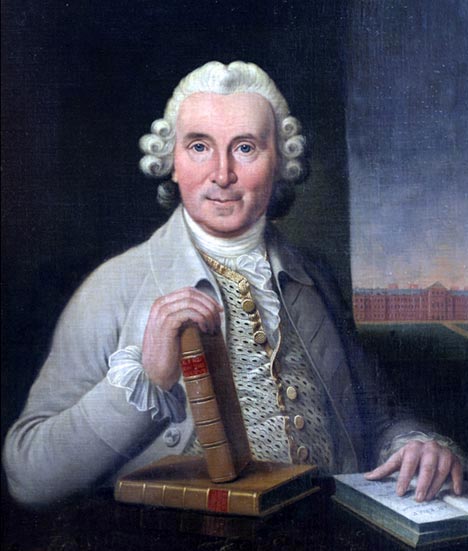In my last post I finished off by speculating whether the ambitions of technocrats like Klaus Schwab for a new world order, dangerously near to fulfilment because of the apathy of the majority, might in part be based on the materialist worldview which regards free-will as an illusion.
I suggested that if the technocrats, and their supporting governments and corporations, believe in their heart of hearts only in chance and necessity, then imposing a supposedly more rational world order on the world using propaganda and behavioural science might seem positively virtuous.
Part of what makes it, actually, tyrannical, is the inconsistent way that such ideologues – from Marx and Lenin onwards – live such a deterministic belief out themselves: that is, they don’t. It is impossible to believe that Geoff Bezos’s singleminded exploitation of his workers and the market, to enable him to afford to finance an entire space program so he himself could take a jaunt, is the product of chance and necessity – although perhaps Bezos read Heinlein’s The Man Who Sold the Moon in his youth and considers himself conditioned by it. Still, I have to admit that is no more inconsistent than the reductive materialists who write books to persuade others to decide to reject free-will. Hypocrisy was never a bar to imposing ideologies on others, as private jets attending climate conferences prove.
It so happens that, as some relief from tracking the depressing state of the world since last year, I decided not long since to pull together some of my previous work on a theology of nature into a small book. The aim is to show Christians, in particular, how they have unconsciously imbibed Monod’s “chance and necessity” into their view of how the world works. Somehow, most people (and certainly most believing scientists) accept a world of chance and necessity into which God occasionally intrudes, if at all. That is entirely antithetical to the biblical view of nature, in which God wills all things and is immanent and active in the whole of creation. Hence I’ve called the book Choice and Fidelity. I’m awaiting my first rejection as I write.

In order to introduce the idea of how such alternative worldviews necessarily limit what we see in the world, I start the book off by “deconstructing” (see – I can do postmodern as well as anyone!) the “science myth” of the discovery of Vitamin C as the cure for scurvy. You probably know the common version: in the bad old days, half of ships’ crews on long journeys died of scurvy, until a rational scientist, the ship’s surgeon James Lind, discovered in 1747 that citrus fruit cured it by empirical experiments on scurvy sailors. All was then well as the Navy issued lime-juice to its sailors (hence you Americans calling us “Limeys”), and eventually the responsible vitamin, ascorbic acid, was isolated by Albert Szent-Györgyi and Charles Glen King to cross the “t”s.
In fact the actual history shows more about the cloying effect of erroneous world-views than about the march of science. Since the sixteenth century, occasional ships’ captains had reported that fresh vegetables or citrus fruit relieved scurvy. These were largely ignored, because the scientific consensus was that diseases are caused by imbalance of the bodily humours, which in turn reflected the still-dominant intellectual worldview that matter was a balance of the four elements. The idea of curative foods belonged to the world of primitive folk-medicine, except when certain categories of food were advocated on theoretical grounds to correct the humours. Oranges didn’t fit the theory.
Now, Lind did try oranges and lemons as one treatment among six for six sick sailors, and they did effect a remarkable cure. But when Lind later wrote his large treatise on scurvy, although he mentioned the accounts of others including the heretical physician Johannes Bachstrom, who was convinced well before Lind that scurvy was due to a deficiency of fresh fruit and vegetable, he downplayed even his own successful cure in favour of a (mistaken) humoral theory more in keeping with the dominant consensus.
In short, it seems his worldview limited his ability to see the significance of even his own evidence, and apparently those blinkers persisted in the half-hearted way that the “dietary hypothesis” was pursued. It was, in fact, sailors rather than doctors who gradually became convinced of the value of lemon juice, and by 1800 the Admiralty had begun to issue sweetened lemon juice routinely.
That was as far as I took the story in my draft – primitive folk medicine triumphs over the “scientific worldview,” and so my effort to rehabilitate an “animistic” view of the physical universe under God is not necessarily to be rejected in favour of materialist chance and necessity. But in fact, I subsequently discovered, there is more myth-busting to the story.
For as lemons became scarce in the Napoleonic Wars, lime juice was substituted by the Admiralty, despite the fact that by the time it reached the men its antiscorbutic properties were almost zero. Accordingly, scurvy was still a problem right through the nineteenth century on long voyages like those to the Arctic.
But by the second half of the nineteenth century a new theory of disease had become the scientific consensus – the germ theory, which is for the most part what I was taught at Cambridge in the 1970s. It is also what dominates the medical and pharmaceutical establishment still, though (it seems largely for commercial reasons) the main obsession now is with viruses and vaccines, which is the charitable reason that agents like cheap Vitamin D have been ignored during COVID, just as Vitamin C was long ignored in scurvy. I can confirm that when universities are committed to germ theory, nothing much else gets taught, and so everything else appears to be quackery.
On germ theory scurvy must, it was assumed, be caused by a microbe (though like SARS-CoV-2 none was ever isolated), and so the shortcomings of Navy-issue lime juice were never explored. Instead it was thought that bacteria must react with meat to produce toxins causing the clinical condition. And so it was that on Captain Scott’s Antarctic Expedition, Scott was obsessional about the hygienic canning of his meat and its handling on board ship. The ship’s eminent doctors even gave lectures on the medical consensus on the cause of scurvy to occupy the crew.
Unfortunately, though, they still got scurvy. It is even argued that rampant scurvy among the ANZAC troops at Gallipoli in 1915 may have contributed to the failure of that campaign (though my Great Uncle Charlie won a DSM there). The germ theory of scurvy did not, in fact, finally bite the dust until the biochemist Szent-Györgyi isolated what he believed to be the compound responsible for scurvy, winning himself a Nobel Prize (and donated it to Finland for their liberation struggle), and King then proved it in an animal model.

What I find particularly interesting is that Szent-Györgyi was fully aware that he was not simply advancing science, but dismissing the medical paradigm of germ-theory and forging an heretical path of his own. He later wrote in terms reminiscent of Thomas Kuhn’s description of “normal science” v. “paradigm shift,” as this quote in Wikipedia demonstrates:
Albert Szent-Györgyi, who realized that “a discovery must be, by definition, at variance with existing knowledge,” divided scientists into two categories: the Apollonians and the Dionysians. He called scientific dissenters, who explored “the fringes of knowledge,” Dionysians. He wrote, “In science the Apollonian tends to develop established lines to perfection, while the Dionysian rather relies on intuition and is more likely to open new, unexpected alleys for research…The future of mankind depends on the progress of science, and the progress of science depends on the support it can find. Support mostly takes the form of grants, and the present methods of distributing grants unduly favor the Apollonian.”
Since he wrote that in 1972, science has become even more thoroughly captured by government and corporate funding, so if he is correct, we can expect to find the real “Dionysian” progress of science occurring on the poorly-funded fringes, not at its respectable Academic centre, where the consensus that everyone follows originates. In that light, current science might be seen to be suffering badly from scurvy, and getting enough fresh nutrients seems essential to truth, but likely to put one out on the margins with the retired researchers and the despised refuseniks. Still, it’s the healthy place to be in the end.

